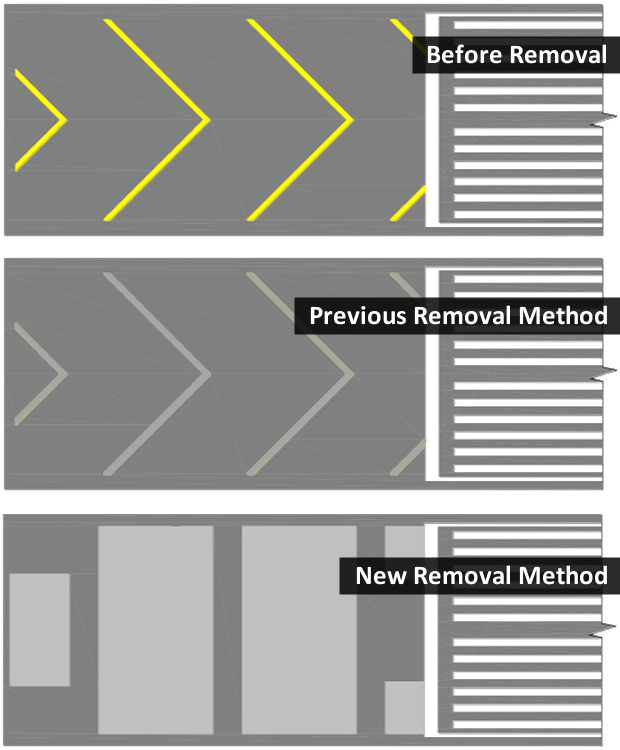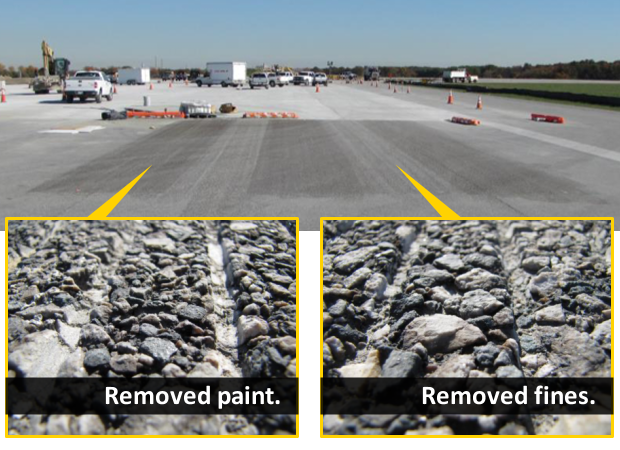Juice < Squeeze
By Donna Speidel
![]()
"This is nuts!"... That's what I'm thinking now.
But I didn't think that right away after I read the recent change to the guidance literature. It was only after I experienced the unintended results of the change that I began to pull my hair out. Let me explain.
A modification was made to the FAA Advisory Circular (AC) 150/5340-1L. A new paragraph, 1.3.f, was added in September 2014 which included the following guidance:
"Physical removal of markings is achieved by water blasting, shot blasting, sand blasting, chemical removal, or other acceptable means that do not harm the pavement. The physical removal of any old marking(s) must include a pre-determined larger size and shape of a removal area that encompasses the old marking(s) and by grouping adjacent markings together into a larger rectangular removal area. The rationale behind this practice is to eliminate the continued visual appearance of the removed marking(s)..."

There's a lot more contained in that paragraph, but this is the essence of the FAA's intent. On the surface (so to speak), it seems reasonable, even smart to attempt to minimize the appearance of old markings to reduce the potential for confusion. While the theory may be sound, what's required and the end results are reasons why I now consider the guidance be faulty.
When this method is put into practice, we run into some unintended consequences.
First, there is a substantial increase in cost when performing "paint removal" methods in a larger area (e.g. $1.00 per square foot).
Second, there are many combinations of pavements and removal methods that will have vastly different results.
Third (and the reason this issue is such a hot mess), so far the results I've seen are not worth the additional expense, the scarring to sometimes-brand-new-pavements (think temporary markings), or the effort.

The picture above shows what a touchdown zone marking (set of three) looks like after completing the "larger rectangular removal area". You can still see where the old markings were prior to paint removal. I agree, the appearance is marginally better when compared to the previous method of only removing painting areas. However, based on several of my experiences thus far, the juice isn't worth the squeeze.
As stated, this guidance works better on Portland cement concrete where the removal methods are less impactful to the pavements. But in my humble opinion, the approach for asphalt pavements needs to be unique and reconsidered by the authors of the AC.

